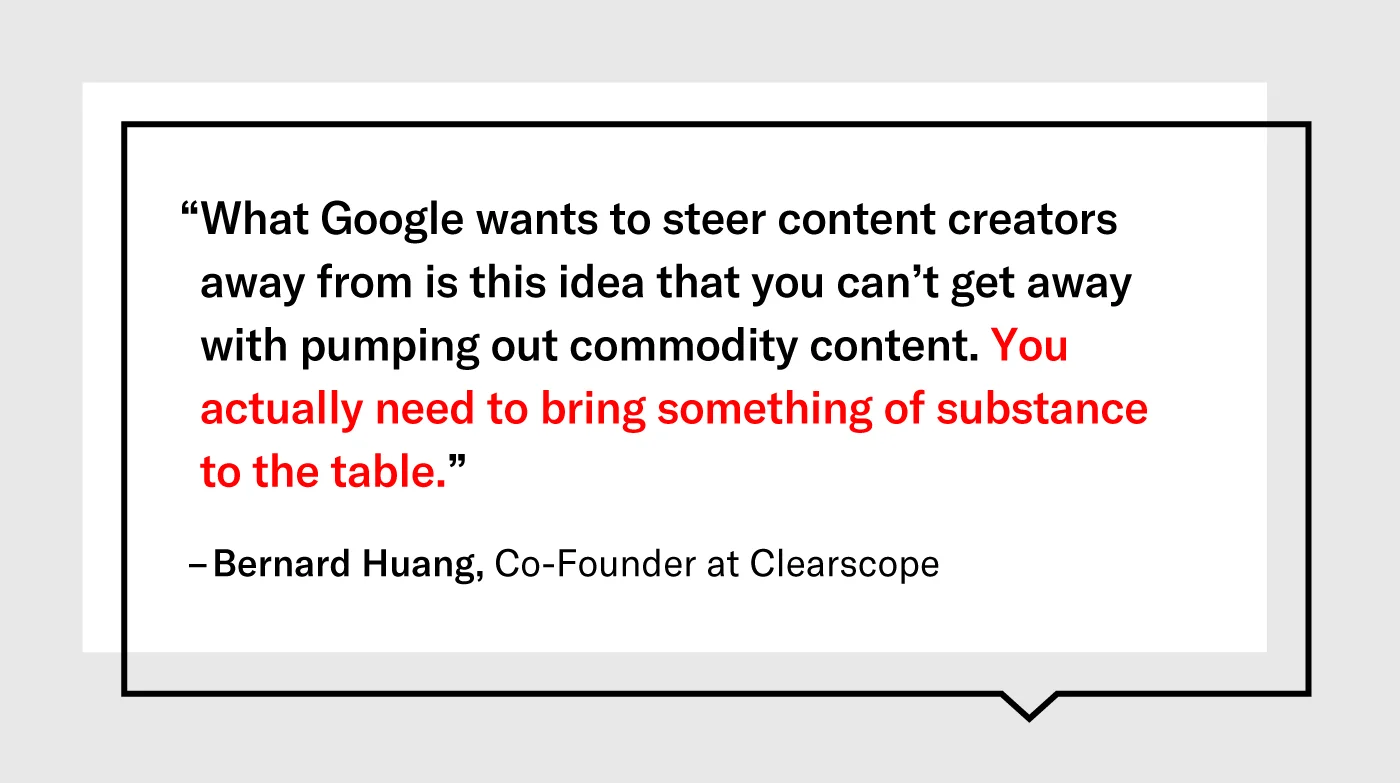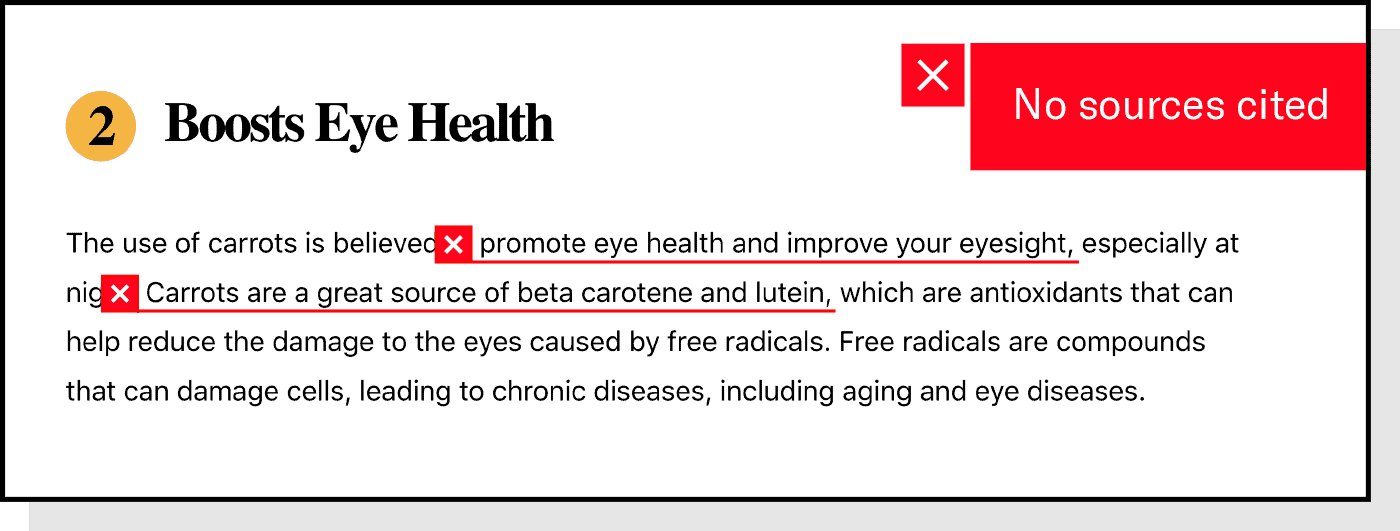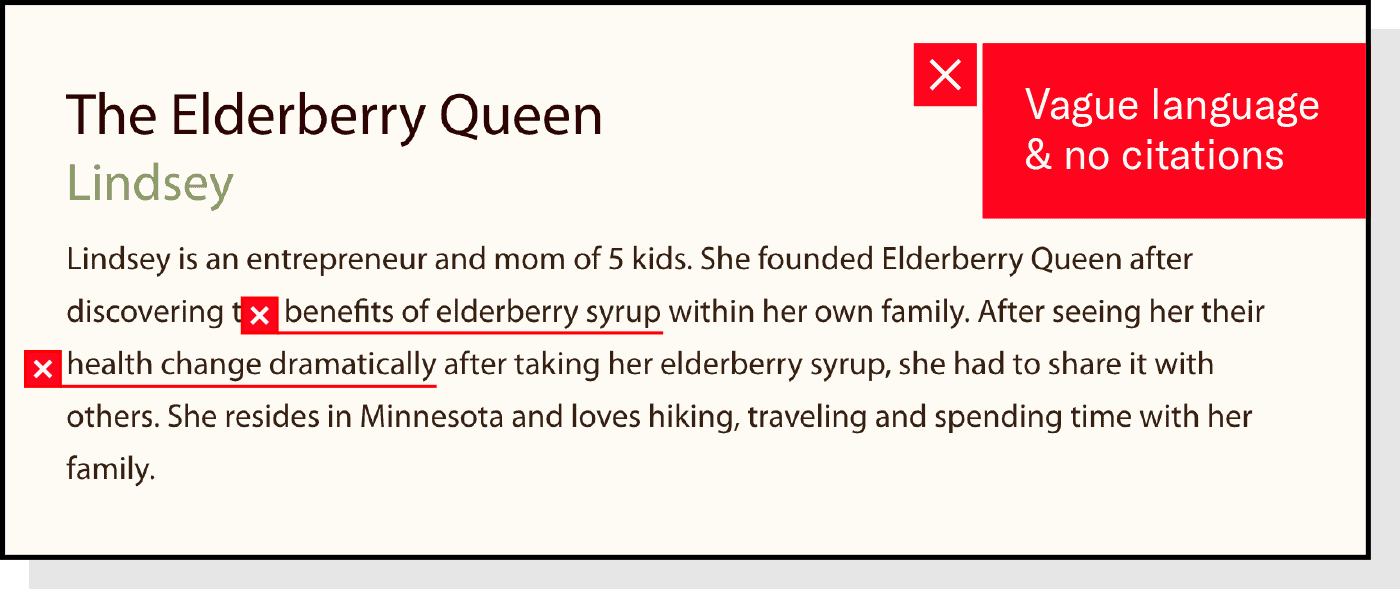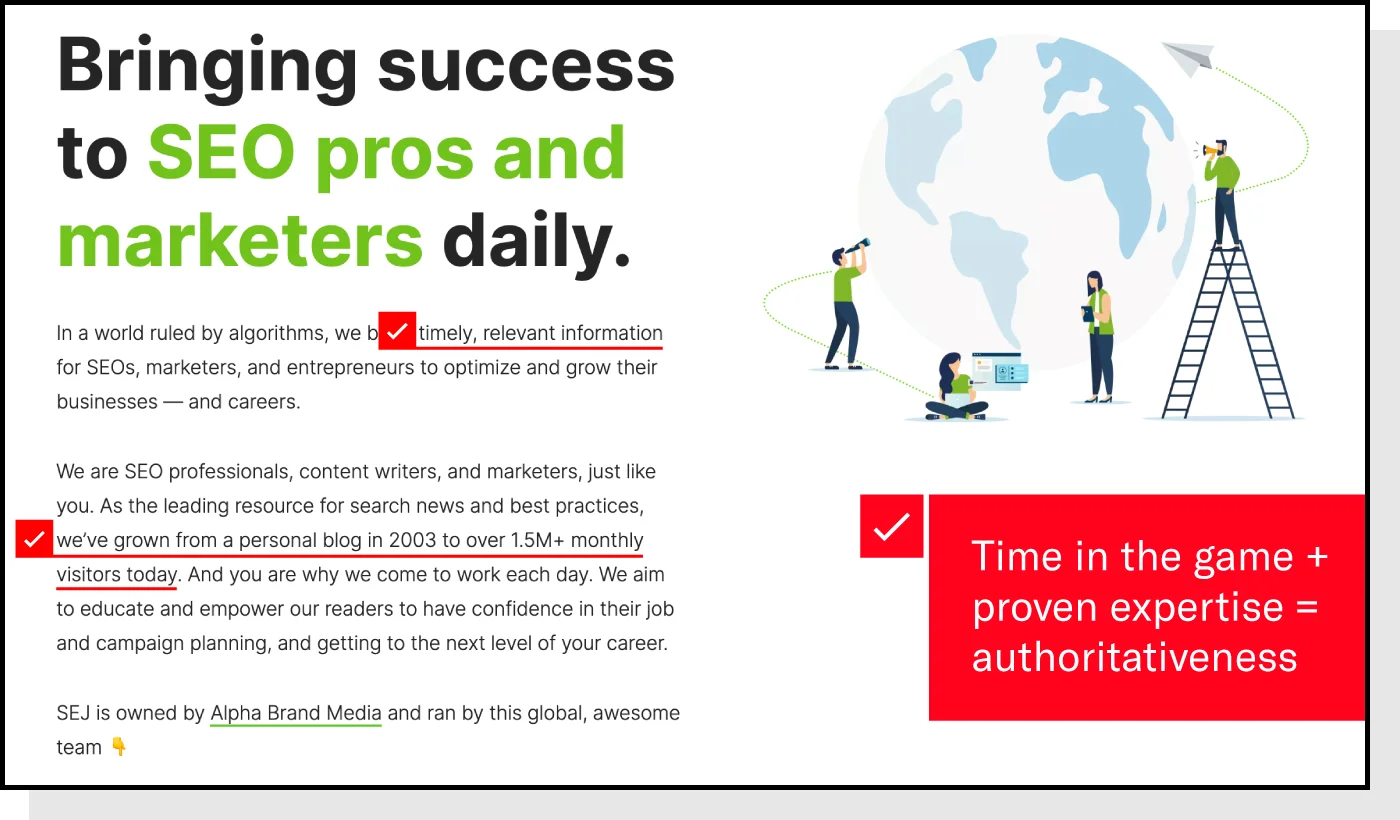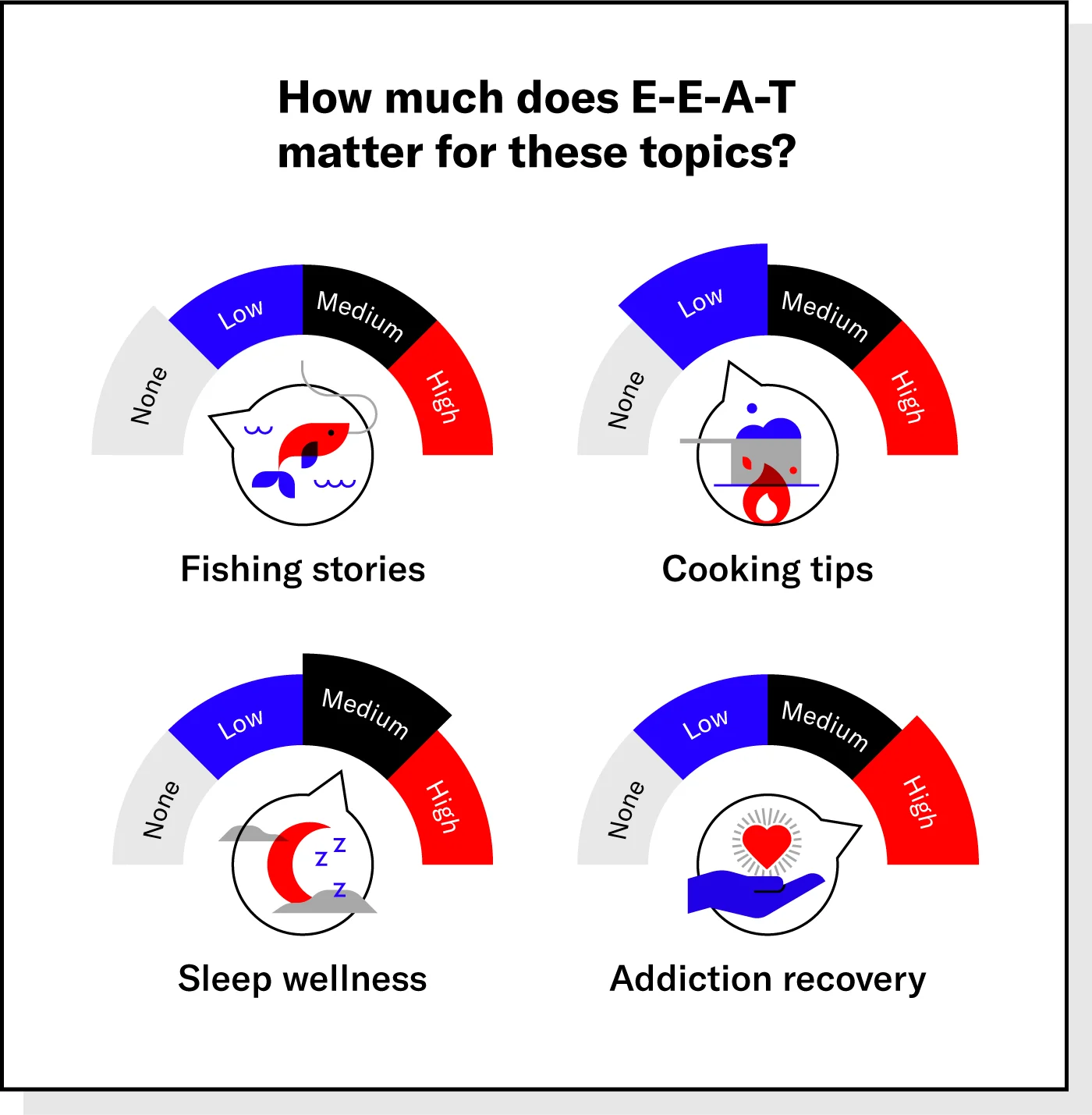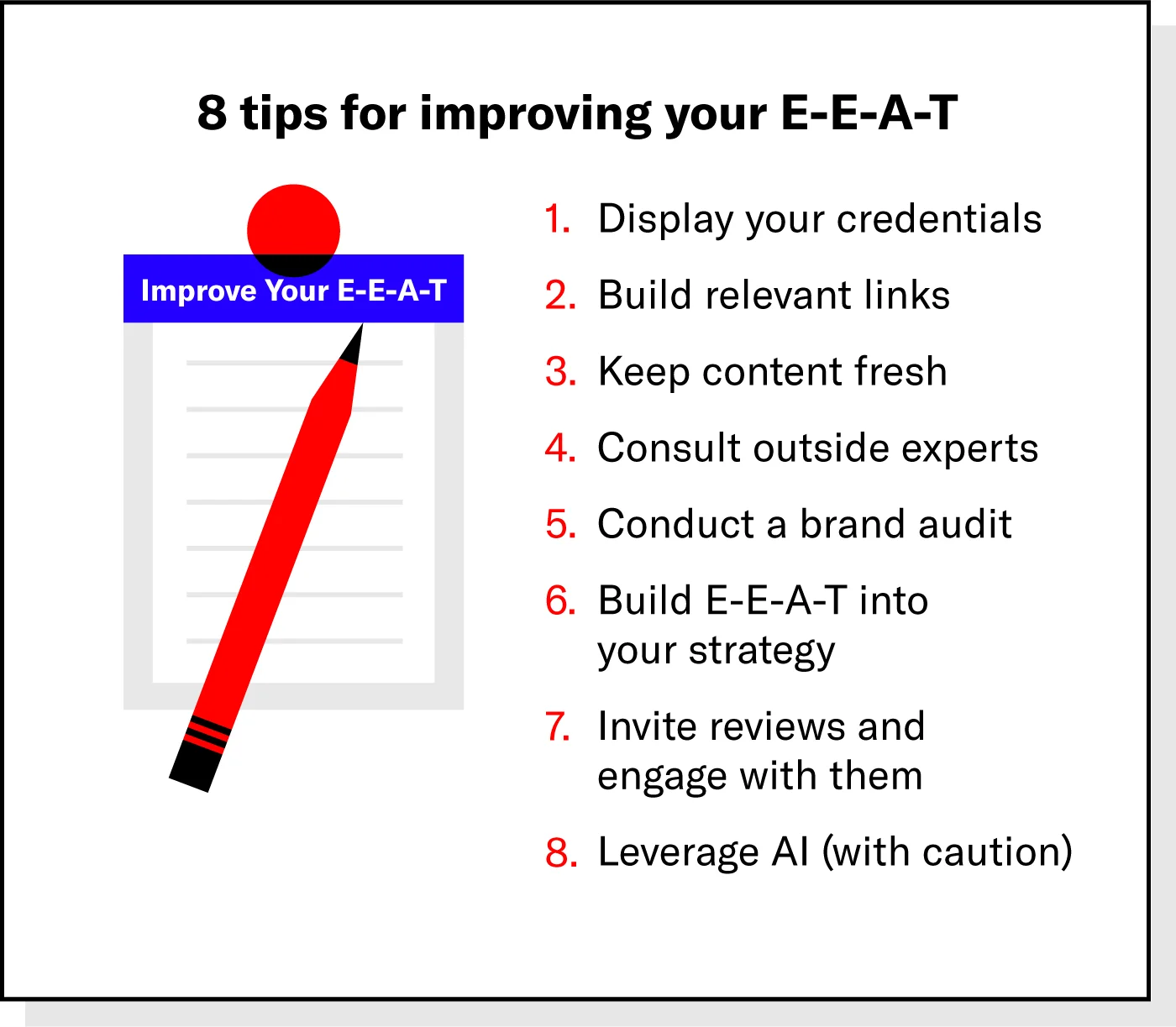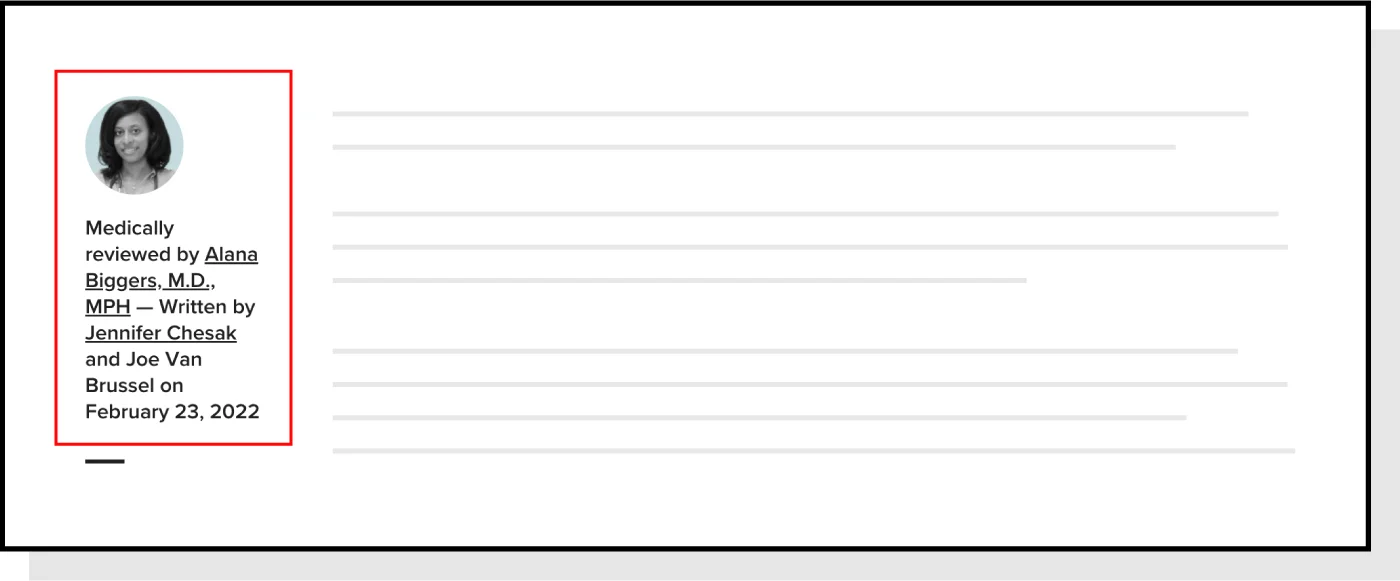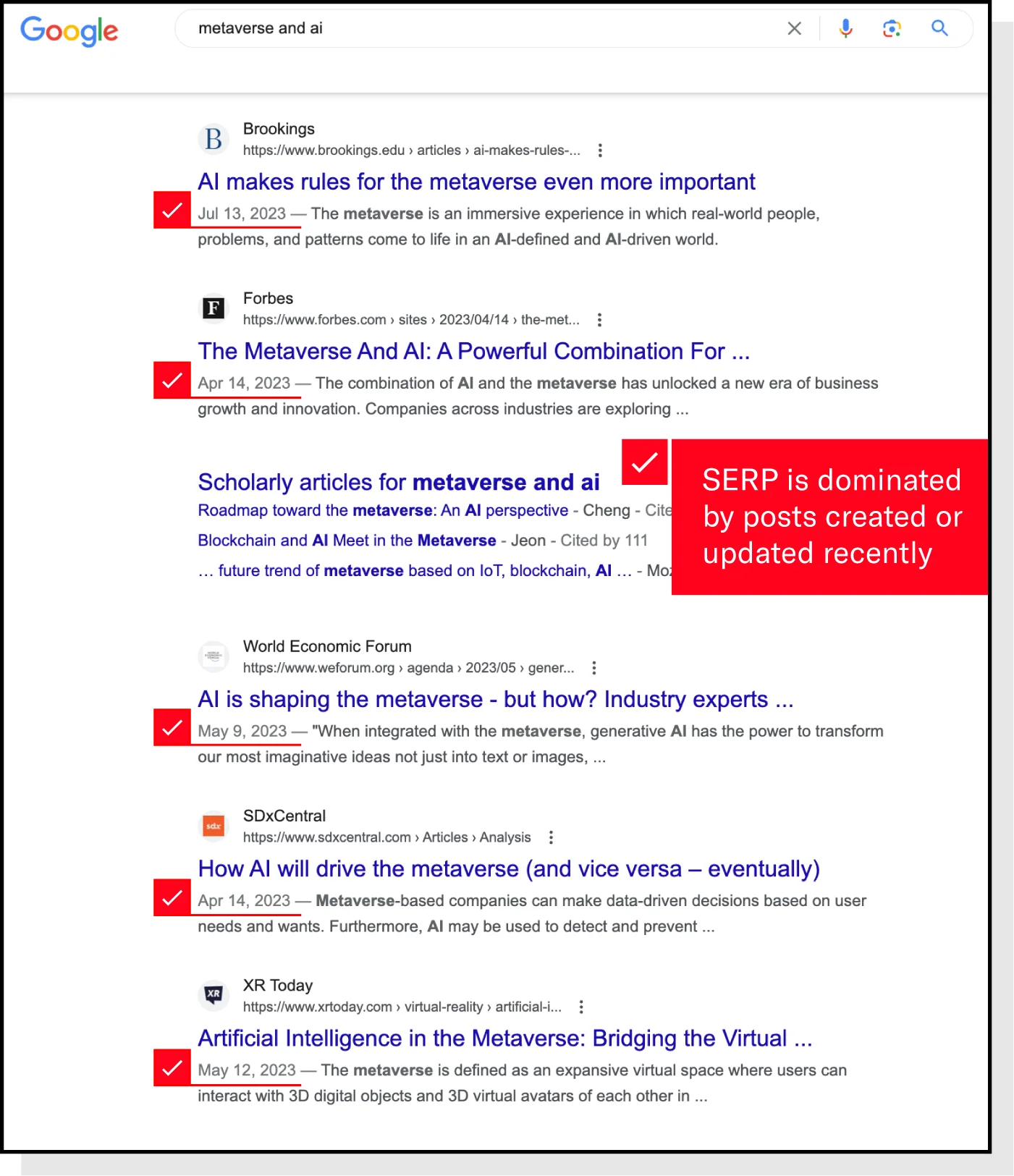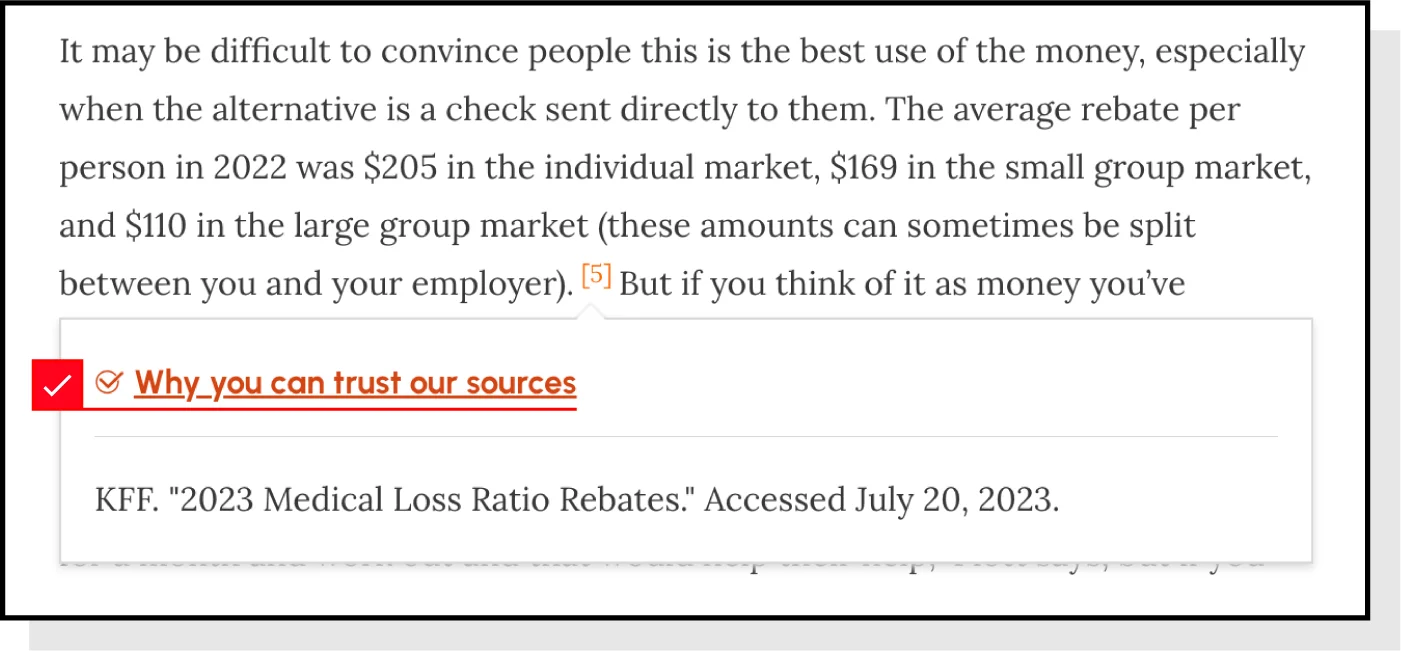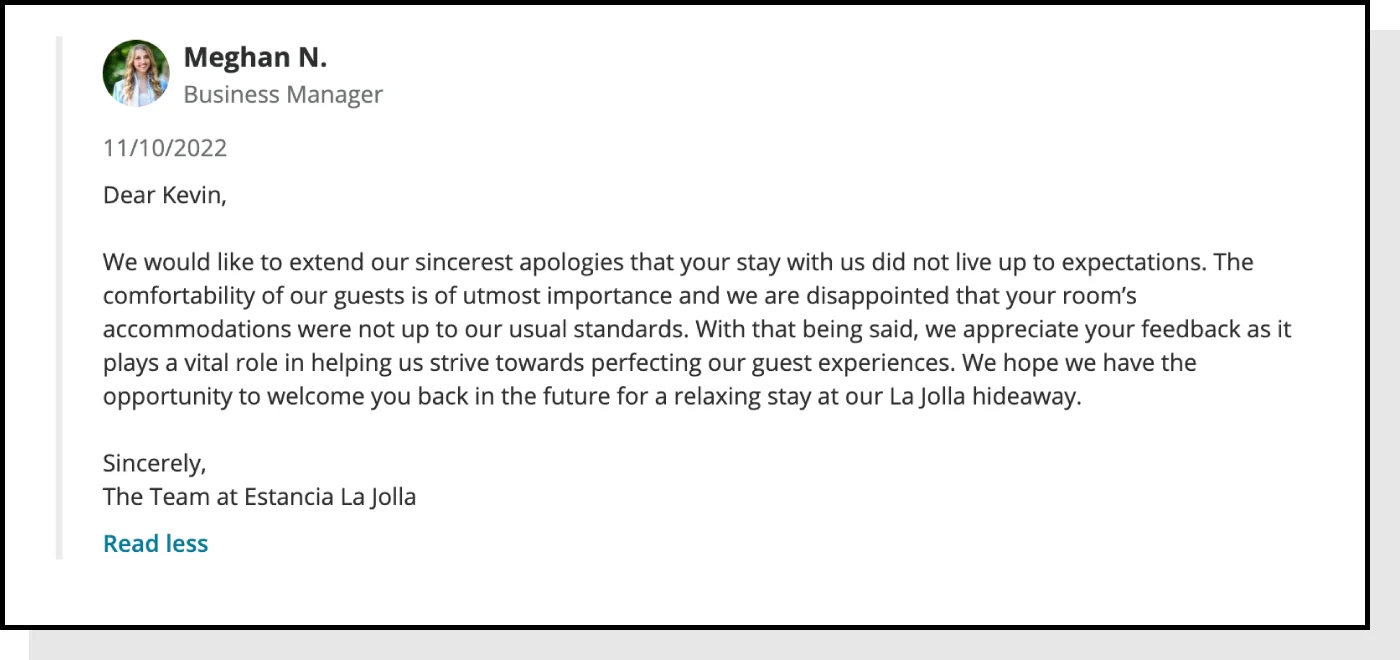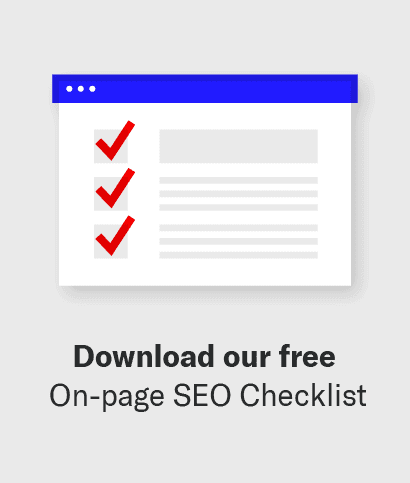E-E-A-T (Experience, Expertise, Authoritativeness, and Trust) represents Google’s dedication to valuing authentic, impactful, and user-centric content amidst the abundance of mass-produced and AI-generated content.
In August 2018, Google’s algorithm updates took a turn that the SEO community couldn’t ignore.
Often referred to as the “Medic” update, this series of algorithm changes began noticeably rewarding sites that excelled in E-A-T (Expertise, Authoritativeness, and Trust).
Then came December 2022, and Google threw another “E” into the mix — Experience. Now, E-E-A-T is the gold standard for high-quality, user-centric content on the web.
We are a 90-person SEO agency of that has helped companies with some of the best E-E-A-T in the world, like Casper and Intuit, reach new heights. In just six months, we increased Casper’s organic traffic by 280%. Through partnerships like this, we’ve developed a sharp eye for what it means to have good E-E-A-T.
Table of contents:
- What Is E-E-A-T?
- The E-E-A-T Acronym, Broken Down
- How Google Determines E-E-A-T
- Why Google Cares About E-E-A-T
- What Is YMYL?
- Is E-E-A-T a Ranking Factor?
- Ways to Improve Your E-E-A-T SEO
Read on for a full rundown of what E-E-A-T is, why it matters for SEO purposes, and how to implement it into your organization’s strategy.
What Is E-E-A-T?
E-E-A-T
[i-i-eɪ-ti] noun
E-E-A-T stands for Experience, Expertise, Authority, and Trustworthiness. Google uses these characteristics to determine the authenticity and quality of a web page to minimize misinformation and increase the amount of useful content on the internet.
While E-E-A-T isn’t a ranking factor — it isn’t a quantifiable criterion Google uses to determine whether a page should rank — it still matters to Google. A lot.
E-E-A-T comes from Google’s Search Quality Rater Guidelines — a 176-page document used by manual reviewers (that’s right — real humans) to assess the quality of Google’s search results.
Google originally published this document online in 2013 to help content creators understand what Google looks for in a web page. However, it wasn’t until 2018 that Google started explicitly rewarding great E-E-A-T.
The December 2022 update (which officially added “Experience” to the mix) was essentially Google’s effort to reemphasize the value of content written by authors who really know what they’re talking about and have something valuable to offer.
E-E-A-T is not easy to establish, but putting time and effort into doing it well is worth it in both the short and long run.
The E-E-A-T Acronym, Broken Down
When you hear the words experience, expertise, authority, and trustworthiness, you may think of them as near-synonyms.
While they are related and play into one another, each of these terms carries nuances important to understand to help you set specific and measurable E-E-A-T goals.
Experience
In a perfect world, nobody would publish anything on a topic they didn’t have first-hand experience with. After all, why should users trust a newbie? Unfortunately, that’s not the reality of most content on the internet.
As a result, Google’s quality raters have started explicitly rewarding content created by authors who have proven experience with the subject matter at hand, indicating a shift away from the mere technical SEO of the past.
There are several ways you can prove that you’re experienced enough to speak on a topic, such as:
- Telling your story via an author bio (assuming you have relevant experience to discuss)
- Providing unique insights from your experiences that don’t appear in ranking content
- Utilizing custom photography or video content to provide additional value to the reader
If you operate in a highly competitive space dominated by content giants (think CNET for tech or NerdWallet for finance), perhaps the only way to compete is to add something fresh and valuable that these competitors can’t replicate.
Take the query “best hiking shoes,” for example. The two highest-ranking posts include mentions above the fold about having personally tested the best shoes in this category. When preparing to make a big purchase, people want to read about others’ experiences — positive and negative — using the product. Not a corporation’s take on why you should buy their product.
Here’s a preview of the post that ranks position two for this query:
The author doesn’t just claim to have tested the best hiking shoes — they include photography and videos of individuals hiking in each shoe. This shows off their strengths (tread, resistance to elements, etc.) and lends credibility to the post.
Expertise
If you’re operating a website within a particular industry, you’d probably consider yourself an expert in that industry, right? Even if that’s a reasonable assumption for you, it isn’t for Google — you have to prove it.
Expertise goes a step further than experience alone — it means having a high level of knowledge or skill in a particular field.
What signals tell Google that it should see you as particularly knowledgeable or skilled in your field?
This could look like sharing your credentials on your site, spending years consistently writing in a certain vertical or partnering with other experts.
It’s also important to note that expertise will look different depending on your industry and the topic at hand.
Google splits topic types into two categories, which we’ll explore in greater detail later: YMYL and non-YMYL. YMYL stands for “Your Money or Your Life” and essentially encompasses any topic that can impact people’s health and well-being.
Expertise for YMYL Topics
For most YMYL topics, Google wants to see content creators with more formal and concrete credentials — think education, certifications and other forms of formal expertise.
If you work in a technical field like cybersecurity, for example, it’s important that Google sees some schooling or training that qualifies you to write about the topic.
Here is snippet from a page that discusses a YMYL topic, but fails to assert its expertise:
Google considers nearly every health-related query to be a YMYL topic. The above post is titled “Amazing Health Benefits of Carrots” — an explicitly health-related query. Therefore, Google should hold it to a high standard of E-E-A-T.
The above page not only fails to back up its claims with data, but it also has not been reviewed by medical experts — both E-E-A-T necessities when writing about a health-related topic.
Further, the author claims to operate in the restaurant business. While this may give them some credibility when writing about a carrot soup recipe on a food blog, it doesn’t establish their authority to write about a topic in health.
For these reasons, the page is struggling to rank.
Expertise for Non-YMYL Topics
For non-YMYL topics, Google defines expertise differently — often in the form of life experience as opposed to formal qualifications.
Google’s Quality Rater Guidelines specifically state: “If it seems as if the person creating the content has the type and amount of life experience to make him or her an ‘expert’ on the topic, we will value this ‘everyday expertise’ and not penalize the person/webpage/website for not having ‘formal’ education or training in the field.”
Suppose you’re a lifestyle travel blogger who regularly posts your adventures and insights, for example. In that case, Google will likely see you as a travel expert even if you don’t have formal training or certification saying you’re an expert. You’re a seasoned traveler who picked up a lot of skill and knowledge over the years, and that’s good enough.
For example, when Googling “Europe backpacking checklist,” an individual American traveler’s blog ranks position one on the SERP. See a snippet from his “About” page below.
There’s clearly some overlap between “Experience” and “Expertise” for non-YMYL topics. What takes the above example a step beyond “Experience” is that the blog’s owner has not only traveled in Europe for over a decade but also explicitly mentions gathering knowledge that many other travelers lack and sharing that knowledge with his audience.
Does he boast a degree in European studies or a similar field? Maybe not. But for a non-YMYL topic like travel, it doesn’t matter. Less formal demonstrations of knowledge and extensive experience are enough.
Authoritativeness
Authoritativeness goes a step beyond expertise. To be trusted as an authority in a certain space, you have to be more than an expert — you must be a thought leader.
Do the insights you share on your website express an understanding of your field and actively contribute to its development and evolution?
Curious what an inadequate effort at authority looks like? See the example below.
Although this author identifies herself as an entrepreneur and “The Elderberry Queen,” her bio does not provide any quantifiable insights that back up her authority.
To improve her authority, she could specify how many years she has been experimenting with elderberry syrup, speak to research that has been done on the syrup’s health benefits or mention a book she has written on her area of expertise.
Next, let’s take a look at a great example of authority in the SEO space. Search Engine Journal has become a source of truth and a go-to resource for SEO news, thanks to its age (launched in 2003) and its extensive community of online marketing experts worldwide.
Even further, think about Google itself. There’s no authority in the search engine space higher than Google. After all, it literally makes the rules.
While you shouldn’t expect yourself to become the Google of your industry, there’s a lot you can learn from industry leaders about what it looks like to be an authority.
Examples of authoritativeness:
- User reviews, expert recommendations and other credible insights written by individuals that provide information about the website
- Signals of reputation, such as awards and accolades or involvement in current controversies/events
Trustworthiness
Trustworthiness is all about consistency. Do you impress your customers and site visitors every time, or has your trustworthiness slipped through the cracks?
Unfortunately, second chances for brands are rare. Delivering false information or inconsistently living out your brand’s mission could result in a tarnished reputation and reduced trust in the eyes of your customers and Google.
A great way to develop trustworthiness is to be transparent from the start.
Take Bankrate, for example. It provides readers with a disclaimer that calls attention to its editorial standards as well as how it makes money.
Thanks to this transparency, users are more inclined to see the brand as humble, authentic, and trustworthy.
Examples of trustworthiness:
- Sufficient contact information
- Precision and accuracy of content
- Citation of trustworthy sources
- Information about content authors
How Google Determines Your E-E-A-T
E-E-A-T communicates site quality to Google and users alike, which makes sites that invest in E-E-A-T more likely to attract traffic, accumulate links and ultimately rank on the SERP organically.
To determine E-E-A-T, Google deploys a team of Search Quality Raters that are tasked with evaluating ranking sites following every algorithm update (and there are a lot of updates — dozens per day, in fact).
These Search Quality Raters are the judges of your site’s E-E-A-T. They refer to Google’s extensive Search Quality Evaluator Guidelines to decide where you stand.
These guidelines lay out what Google means by E-E-A-T:
- The expertise of the creator of the Main Content.
- The authoritativeness of the creator of the Main Content, the Main Content itself, and the website.
- The trustworthiness of the creator of the Main Content, the Main Content itself, and the website.
As you can see, Google takes a comprehensive look at not just your site and its content, but also the authors of that content.
Of course, the specifics of E-E-A-T can still feel confusing at times. SEO and E-E-A-T expert Lily Ray discusses what it should mean to impress Google with an E-E-A-T strategy.
Why Does Google Care About E-E-A-T?
Imagine you’re interested in taking out a loan and are looking for financial advice online.
As you comb through the articles on the first page of the SERP, all you see are small blogs run by individuals without financial degrees. When you open a page, you see stream-of-consciousness opinions about what you should do with your money. No Investopedia, no NerdWallet.
That wouldn’t fly.
E-E-A-T is one of Google’s tools to ensure this doesn’t happen. Google has a social responsibility to surface pages that provide readers with accurate and valuable information.
In Google’s 2019 white paper titled “How Google Fights Disinformation,” it specifies, “We have an important responsibility to our users and to the societies in which we operate to curb the efforts of those who aim to propagate false information on our platforms.”
People often make life-altering decisions based on what they read online, so surfacing content that fails to meet E-E-A-T criteria could pose a risk to people and their communities. This would damage the trustworthiness of Google itself and potentially the communities it serves.
This holds especially true for topics that inform important decisions, which brings us back to YMYL.
Revisiting YMYL
“Your Money or Your Life,” or YMYL, is a classification Google uses for content that can directly impact users’ financial well-being, physical and mental health, safety and happiness.
So how does E-E-A-T come into play here?
According to Google, “We have very high Page Quality rating standards for YMYL pages because low-quality YMYL pages could negatively impact a person’s happiness, health, financial stability, or safety.”
Essentially, Google holds YMYL pages to the highest level of scrutiny regarding E-E-A-T because this content can directly impact its users’ lives.
Ranking misleading or poor content within this space could negatively impact user health and safety.
You can probably think of some industries and categories that Google groups into this category. Here’s a list of the pages most often classified as YMYL, according to Google:
- Finance. Sites that offer financial advice (like fintech companies) should have the expertise and trustworthiness to inform users’ monetary behavior.
- Shopping. In the same vein, e-commerce sites and sites providing information about shopping research must prove their validity.
- News and public information. Misinformation about politics, current events, etc., can both directly and indirectly harm people’s quality of life.
- Medical and safety. Sites that offer guidance regarding physical and mental health perhaps have the most direct impact on people’s health and safety.
- Government and law. If a page informs readers about the law, local politics, voting, and the like, it must provide up-to-date and accurate information.
- Associations. Pages making claims about people based on qualities such as ethnicity, race, nationality, religion, age, disability, gender and gender identity, sexual orientation, or veteran status get closely monitored to protect users.
Google also considers sites and pages related to “big decisions or important aspects of people’s lives… such as fitness and nutrition, housing information, choosing a college, finding a job, etc.” as YMYL.
In an interview, Google’s John Mueller confirmed the importance of prioritizing E-E-A-T for YMYL topics, saying, “…Especially for medical topics, anything that’s a little more critical, I would also keep in mind everything around the E-E-A-T. So the expertise, authoritativeness, and trustworthiness.”
So Why Isn’t E-E-A-T a Ranking Factor?
With all the time and attention Google puts into determining a site’s E-E-A-T, you might assume it to be one of Google’s notorious ranking factors.
Here’s why it technically isn’t.
A single metric can’t measure E-E-A-T — it requires a comprehensive look at several factors, such as the quality of authors, the site itself, brand image, etc. This is why it can’t be considered a direct ranking factor.
However, indirectly, it works almost exactly the same as a ranking factor. The process just looks different.
Google’s Search Quality Raters look at authors and site authority signals to inform Google’s algorithm, which ultimately helps pages with better E-E-A-T rank.
If those pages have additional positive signals (i.e., lots of relevant backlinks), this can help Google verify the site’s E-E-A-T and continue to rank it above other competitors.
So there you have it — even though it isn’t technically one of Google’s ranking factors, Google rewards excellent E-E-A-T. Next, to help you earn Google’s trust, we’ll walk through some strategies to elevate your E-E-A-T.
8 Ways to Improve Your E-E-A-T SEO
If you aren’t confident your site has established sufficient E-E-A-T, don’t stress. There’s always an opportunity to build it. In fact, establishing E-E-A-T should be an ongoing process, and you should never settle for “good enough.”
Let’s take a look at some proven ways you can start enhancing your E-E-A-T and proving to Google that you deserve to be on top of the SERP.
1. Flaunt What You’ve Got
As we’ve established, Google loves expertise. If you have it, don’t be shy — make it known!
Perhaps you have a team of certified experts informing your content, or maybe you’ve been working in your industry for 10+ years and know the ins and outs of even the most technical topics.
Healthline, for example, recognizes the importance of expertise as a part of a YMYL industry (health). It publicly communicates that doctors and other certified medical professionals have reviewed medical content before publishing.
One great place to communicate your E-E-A-T is on your site’s About Us page or equivalent. It’s the page that users (and Search Quality Raters) who want to learn about your organization will gravitate toward.
This provides an opportunity to put your achievements, authenticity and authority in your space front-and-center. This might look like:
- Awards your organization has won
- Education/certifications of your team
- Appearances in relevant publications
- Books or projects you’ve created
Consider Hubspot, for example. In a sleek, clear and non-intrusive way, the company communicates its extensive presence and impact.
2. Build Links Strategically
While links from anywhere might have helped boost your E-E-A-T in the past, Google has gotten smarter.
Today, building links should be more strategic.
Before reaching out to a site in an attempt to receive a backlink, consider whether the prospect makes sense for your industry. If you’re a skincare brand, a link from a construction site likely won’t improve Google’s perception of your E-E-A-T.
In fact, Google makes an effort to penalize sites for collecting irrelevant links at scale. Back in 2014, yellowHEAD’s Yonatan Dotan presented a case study on Ginger Software, which received an influx of unsolicited spammy links from a variety of irrelevant sites. As a result, Google penalized the site’s rankings and traffic.
This not only speaks to the importance of strategic link building, but also the need to carefully monitor your site’s organic backlinks for suspicious activity.
Of course, highly authoritative and relevant links are some of the best ways to communicate your authority to Google. But earning them requires a great deal of time and resources. You have to consistently create high-quality content that the right sites want to link to.
3. Conduct Regular Content Refreshes
Evergreen content is great. It stays relevant year-round and rarely (if ever) needs to be updated.
However, there are a lot of content opportunities that aren’t evergreen, such as seasonal topics and topics that are still evolving.
For example, a piece about the state of the electric vehicle industry will not stay relevant for long. The industry is in a state of rapid evolution.
As you can see, when you Google “metaverse and ai” there is very little content that was created or updated before 2023 on the front page. Google rewards freshness due to the nature of the topic.
While it can be a great content strategy to capitalize on time-sensitive opportunities, it’s equally important to keep them up-to-date.
This holds especially true for YMYL topics such as financial, legal and medical advice, where the information in an article can have a direct impact on readers’ lives.
Leaving outdated content on your site for too long will deteriorate your trustworthiness, ultimately harming your rankings. That’s why we recommend conducting regular content audits to identify content refresh opportunities.
4. Seek Expertise Externally
If you don’t have in-house medical or mental health professionals to review your post on how herbal tea can relieve anxiety, don’t panic. You still have opportunities to prove your expertise.
Experts are out there — you just need to find them.
Consider following groups on LinkedIn and Facebook that share insights about your industry, and reach out to thought leaders when you see their names mentioned.
Many experts would be more than happy to provide a quote or a piece of advice about their topic of interest. It’s a win-win situation — you bolster your E-E-A-T, and the expert gets more exposure.
If you’re struggling to find a specific individual you’d like to reach out to, you can also use tools to source quotes from several experts, then choose the quotes you find most useful.
Help a Reporter Out (HARO) is a great resource for doing just that. It allows you to customize a query and request a specific type of expertise to make sure you get the most relevant and useful information possible.
You also don’t need a fresh, new quote to bolster the expertise of your piece. Lots of organizations conduct studies on niche topics related to their industry.
Try sourcing relevant data from those studies to show readers (and Google) that you’ve done your research.
5. Audit Your Brand
What do people (and search engines) think of you?
This will require some digging — asking your employees or co-workers how they perceive your brand won’t cut it. There’s bound to be a pretty massive discrepancy between internal and external perceptions of your brand.
Instead, here are a few impactful brand audit tips to try:
- Audit your site. Do your homepage, your “About” page and your blog all communicate that you’re an authority in your space? Are you transparent about why customers should trust you? As previously mentioned, you shouldn’t be shy about your credentials — they make you trustworthy!
- Survey your customers. You might feel that your website communicates an excellent brand image, but your customers may not agree. You can expect your users to provide much more accurate data. Use a tool like UserTesting.com to ask customers how trustworthy they feel your site is. Consider asking about their trust in your brand, the words they associate with your site and whether your brand image is aligned with what you deliver.
- Analyze your online presence. What are people saying about your brand unprompted? When Googling your brand, what are publications, competitors and bloggers saying about you? It doesn’t matter if you believe this perception to be inaccurate — it’s how people see you. If their perception is unfavorable, it might be time to adjust your brand strategy.
- Improve customer experience. When you improve your customers’ experience, you improve your brand image. Make it as easy as possible for users to navigate your site, receive answers to their questions, and contact you. The better you anticipate your customers’ needs, the more trustworthy you become. This also means making your site visually appealing — invest in high-quality design and A/B test different options, tracking which performs best.
6. Build Your Content Strategy Around E-E-A-T
Unfortunately, E-E-A-T is often an afterthought in the content creation process.
Many of us are guilty of thinking, “Why don’t we source a last-minute quote to make our post look a little better?”
While sometimes, you’ll be able to find a great quote or data point to make your piece appear to have more expertise, Google (and many readers) can see through this, especially if done in place of an E-E-A-T strategy.
Effective E-E-A-T requires forethought, planning and consistency. If you have a SOP detailing your content creation process, add a step to source relevant quotes and/or data before the writing process has started.
Remember, trustworthiness is all about consistency, and what better way to ensure consistency than to bake your E-E-A-T strategy right into your day-to-day content creation process?
PolicyGenius does a great job of anticipating its skeptical users’ questions regarding its legitimacy and trustworthiness.
Hover over the superscript citation markings and you see a link saying “Why you can trust our sources,” which directs users to its editorial and citation standards.
PolicyGenius anticipates that users looking at sources want to verify their validity, so it places links to its trustworthiness commitment wherever it cites data. This is a great example of integrating E-E-A-T into an overall strategy rather than sprinkling it in sporadically.
7. Attract Reviews and Engage
Reviews don’t just provide insight into what you as an organization should improve — they also send signals to Google. Numerous positive reviews communicate to Google that your customers trust you.
But what about negative ones?
While several negative reviews obviously aren’t good for your brand image or E-E-A-T, responding to negative reviews communicates that you care about customer wellbeing and does positively impact trustworthiness.
Take the following response to a customer’s negative review of their stay at the Estancia La Jolla in San Diego, for example.
The manager responds with empathy and appreciation for the feedback instead of defensiveness or an effort to change the review.
Engagement with all reviews — positive and negative — is a great idea. It humanizes your brand and makes customers feel cared for. A great response might even convince a customer to change their negative or mediocre review.
You should also note a recent update from Google that aims to improve the rankings of sites with more complex and detailed reviews — reviews that really help other customers make purchase decisions.
When inviting reviews, encourage customers to share their full experience. This might include images or videos, which tend to speak louder than words.
Leverage AI (With Caution)
Sixty-five percent of content marketers plan to use AI tools to support their content creation process. This statistic shouldn’t scare you, per se — AI certainly has a place in content marketing and can go a long way to save you time and energy.
Use it to cut down on the time it takes to brainstorm content ideas, reframe the voice and tone of a piece of content to speak to your target audience or structure an outline in a way that flows logically. You can use all these use cases and more to boost the quality of your content and, therefore, your E-E-A-T.
But here’s the thing about AI-generated content: It’s not original.
Even if it isn’t directly plagiarized, it pulls preexisting information from the internet. Plus, many AI tools that generate content aren’t up to date — they’re trapped a couple of years back (I’m looking at you, ChatGPT).
Use it as a starting point, but ultimately rely on collecting and leveraging your own experience to stand out on the SERPs.
Time to E-E-A-T
Like many aspects of SEO, E-E-A-T can feel intangible and perplexing at times. You may not notice an immediate cause-effect relationship between the steps you take to improve your E-E-A-T and your rankings.
Above all else, E-E-A-T is an investment in your brand image. Impress your customers and Google will be soon to follow.
As you work toward becoming an authoritative figure in your space, start by writing a killer author bio that echoes your expertise.
Siege Media is an SEO-focused content marketing agency with extensive experience developing YMYL companies’ E-E-A-T. Take a look at what we’ve done to help major fintech players reach new heights thanks to our subject matter expertise, world-class SEO, and captivating design.


